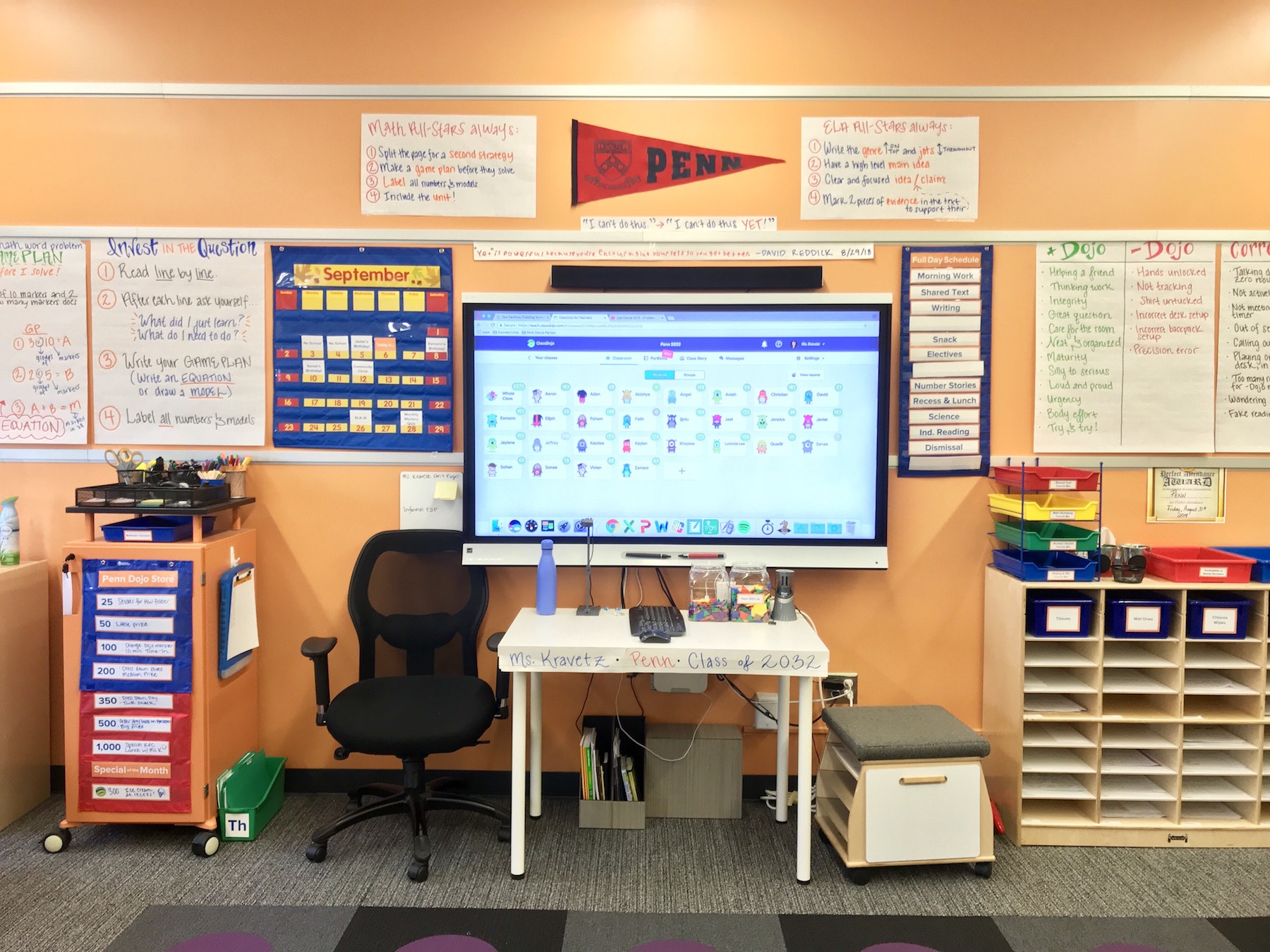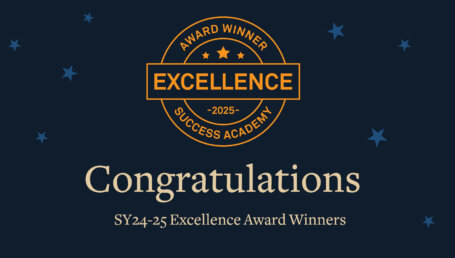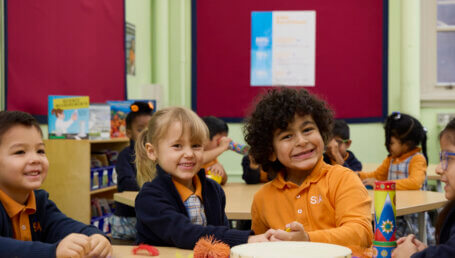
“Decisions, decisions, decisions,” said third-grade teacher Katie Anglin, standing in the center of her classroom and thinking about where to put her cabinets.
Just a few weeks ago, throughout the halls of Success Academy Fort Greene this was a common sentiment. That morning, teachers arrived after summer break to find their classrooms just as they had left them at the end of the school year: chairs and tables stacked on top of each other, bookshelves wrapped carefully in plastic, the walls bare. Over the next couple days, they would unpack their materials and transform the school once again into a temple of learning. However, this doesn’t mean simply lining up desks and putting a few posters on the wall. The arrangement of a Success Academy classroom requires thoughtfulness, strategy, and — most importantly — creative joy.
The arrangement of a Success Academy classroom requires thoughtfulness, strategy, and — most importantly — creative joy.
“The way you arrange and organize your room sets you up for success,” said Principal Victoria Brienza. “It matters as soon as the kids come in in the morning.”
This point was illustrated by fourth-grade co-teachers Brigid Klarich and Chelsea Marone, who were busy tweaking the design of their classroom so that scholars would feel “safe, happy, and ready to learn” from the first moment they arrived. A key decision was around where to place the class reading corner — and how to make it as fun and inviting as possible. They chose a quiet spot and added a comfy-looking easy chair, along with framed photographs of Lebron James and Barack Obama reading their favorite books.
Next, it was time to think about morning routines. Like so much else, these would be intricately shaped by the choices that Chelsea and Brigid made in laying out their classroom. “This year we want them to come in through this first door,” explained Brigid. “That way there’s a clear path from the door to the coat hooks to the desks.”
“We want them to put their things away first,” said Chelsea. “Last year they’d go to their desks first. Then they’d linger, bunch up…This way it’s a much a calmer, easier transition. ”
Next door, fourth-grade teacher Libby Thompson, had her own opinions about desk set up. “In the beginning of the year,” she said. “I like to have the desks close together in clusters. It helps the kids feels like they’re a part of a classroom, like they’re on a team.”
Specials teachers were also putting serious thought into how their classrooms would affect their scholars’ experience of school. Chess teacher Daniel Kemper was trying to arrange his room so as to better simulate what it would be like to compete in an actual chess tournament.
“I’m having them sit at long tables, three to a side, because that’s what it’s like at tournaments. I’m hoping that way they’ll learn to share space with other bodies while they’re playing, and to focus on their own games while other games are being played around them.”
Gradually over the course of the day each classroom took shape. Desks were arranged into rows and clusters. Libraries were unpacked. Signs and posters were hung. With every change, no matter how small, the teachers of SA Fort Greene were enacting a vision of the learning environment they wanted their scholars to experience. When asked if there was general theme guiding the choices she was making while unpacking, third grade teacher Lily Kravetz thought for a moment and then gave an answer that was true of any Success Academy classroom: “Everything has a purpose.”










